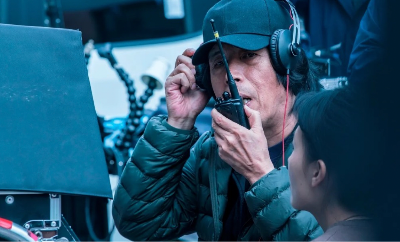
Met with an unlikely combi- nation of boos and a Best Direc- tor award at the 2012 Cannes Film Festival, Carlos Reygadas’ “Post Tenebras Lux” has much at stake in its theatrical New York release. “Post Tenebras Lux,” which is Latin for light after darkness, is a stark portrait of a Mexican family who moves from a wealthy urban environment to the rural countryside. They experience a rude awakening, find- ing themselves helpless against the whims of nature.
The film is far from feel-good. Stepping into Reygadas’ brutally surrealist world, the audience witnesses a fatal beating of a dog at the hands of its owner, a particularly graphic scene in which the female lead is given as a ritual sex offering and self-decapitation.
That being said, the shock value of these depictions is somewhat counterbalanced by the inno- cence conveyed in much of the film’s stunning portraiture.
The characterizations are on point, and Reygadas does a splen- did job of captivating his audi- ence with dialogue that feels incredibly organic despite the film’s borderline sensationalist tone. These characterizations are bolstered by performances from Nathalia Acevedo and Willebaldo Torres, who puts forth an admirable performance in his portrayal of El Siete.
Where “Lux” shines most, however, is its powerful imagery, for which the viewer can thank cinematographer Alexis Zabé. In certain scenes, the film’s picturesque visuals are so engrossing and captivating that at times viewers may forget they are watching a movie.
It would seem that Reygadas has a distinct flair for the unconventional — this is evident in the many production aspects that add to the film’s sometimes other- worldly feel, from the movie’s 1:33 aspect ratio to the use of a beveled lens in certain scenes, which cre- ates a kaleidoscopic effect.
While the film’s chronology is highly irregular, scene cuts are well-placed, with each shot al- lowing the viewer just enough time to begin drawing inferences in one shot before shifting to the next, leaving viewers asking for more. Even though the transitions are somewhat jarring at first, they eventually become a seamless part of the film’s fan- tastical narrative style.
“Post Tenebras Lux” may call for a degree of devotion from viewers that may be unrealistic. But if viewers are willing to submit to the task of wrapping their minds around the many pieces that make up this bizarre jour- ney, their efforts will be rewarded with a stunning experience.
A version of this article appeared in the Wednesday, May 1 print edition. Jon Marcus is a contributing writer. Email him at [email protected].











































































































































